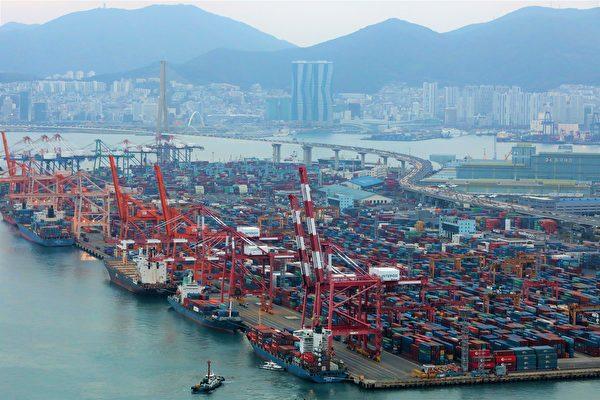Despite growing exports, the trade deficit in South Korea jumped to a 56-year high in January, prompting concerns as experts believe that it could be a signal of a less optimistic 2022 economy.
According to data released by the South Korean Ministry of Trade, Industry and Energy on Feb. 1, South Korea’s exports in January increased by 15.2 percent from the same month last year, to $55.32 billion.
This figure pales in comparison to the growth of imports, however, as imports climbed to a 35.5 percent increase over the same period last year, to $60.21 billion.
Following the $590 million trade deficit last December, it’s the first time since the financial crisis of 2008 that South Korea has seen a trade deficit for two consecutive months. Furthermore, the resulting trade deficit of $4.89 billion in January is the highest since compiling trade statistics began in 1966.
The ministry claimed that the trade deficit in January was caused by “temporary seasonal factors such as rapidly rising energy prices coupled with high demand in winter,” according to the editorial “Record trade deficit” published by The Korea Times on Feb. 3.
Difficult to Decrease Deficits
Experts, on the other hand, believe that a variety of factors may have caused the deficit, and the government should be proactive in its economic measures.Jung Sik Kim, an Emeritus Professor of the School of Economics at Yonsei University, told the Yonhap News Agency that there shouldn’t be too much optimism, as “most of the increase in export value is due to an increase in the unit price of goods rather than an increase in volume.”
Dong Keun Cho, an Honorary Professor of Economics at Myongji University, told the Chinese Edition of The Epoch Times that factors such as prolonged U.S.-China conflicts, COVID-19 variants, and Russia-Ukraine tensions have deteriorated global trade.
“Most likely, it would be difficult for the South Korea trade deficit to return to a surplus as the United States may raise its interest rate, and the largest trading partner of Korea, China, is slowing down its economy,” he said. “The government should prepare for the worst and take preemptive actions such as import diversification, developing alternative energy sources, and strategic reserve, etc.”
Although South Korea’s exports have been increasing steadily for 15 consecutive months since November 2020, the rate at which the exports are growing has been slowing down in recent months, according to statistics released by the Korea Customs Service.
Economic Dependencies
Based on last year’s exports, China and the United States account for 40 percent of South Korea’s exports, at 25.2 percent and 14.8 percent, respectively.With the two countries being South Korea’s largest trading partners, fluctuations in their economies will be reflected in South Korean exports, especially after the International Monetary Fund (IMF) lowered the 2022 economic growth projections for the United States and China in its World Economic Outlook in October 2021.
Furthermore, since natural resources are scarce in the peninsula, South Korea is heavily dependent on imports of raw materials for its production of core exports, such as semiconductors, petrochemicals, and automobiles.
According to statistics released on the Aju Business Daily by the Federation of Korean Industries, South Korea has a 29.3 percent trade-to-GDP ratio with China in fields such as parts, components, and raw materials.
It’s also noteworthy that the Hyundai Research Institute has projected a drop of 0.5 percent in the growth of the South Korean economy for every one percent drop in the growth of the Chinese economy.





